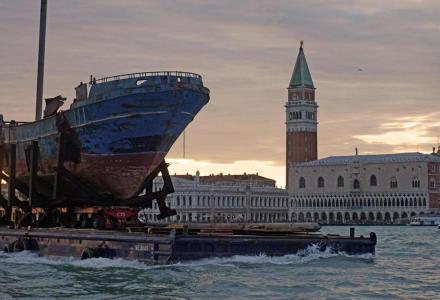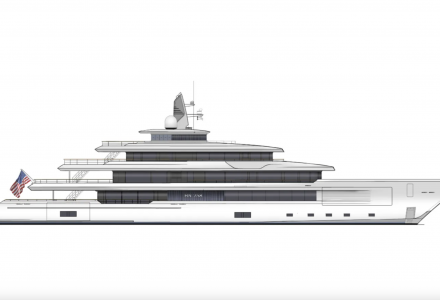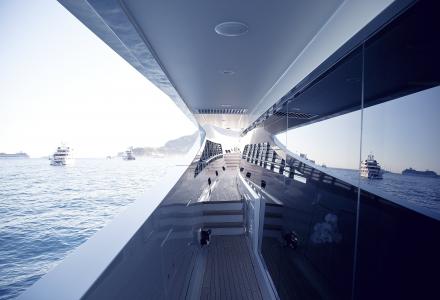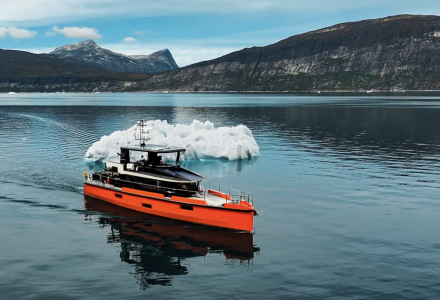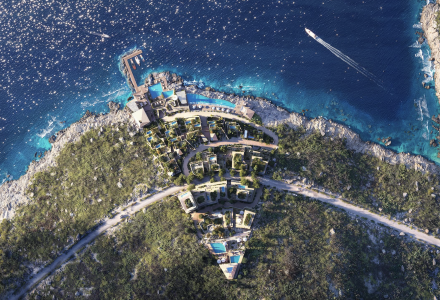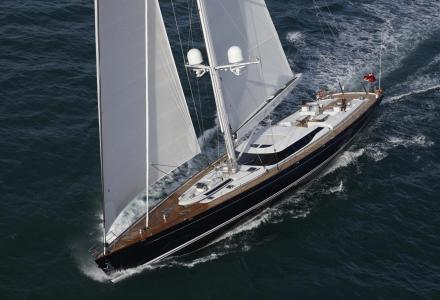Along with gaining popularity general concern of the owners regarding the art preservation on-board, some vessels end up becoming art themselves. At the the Venice Biennale, visitors will find Barca Nostra, the notorious shipping vessel that sank on April 18, 2015 with over 800 migrants on-board.
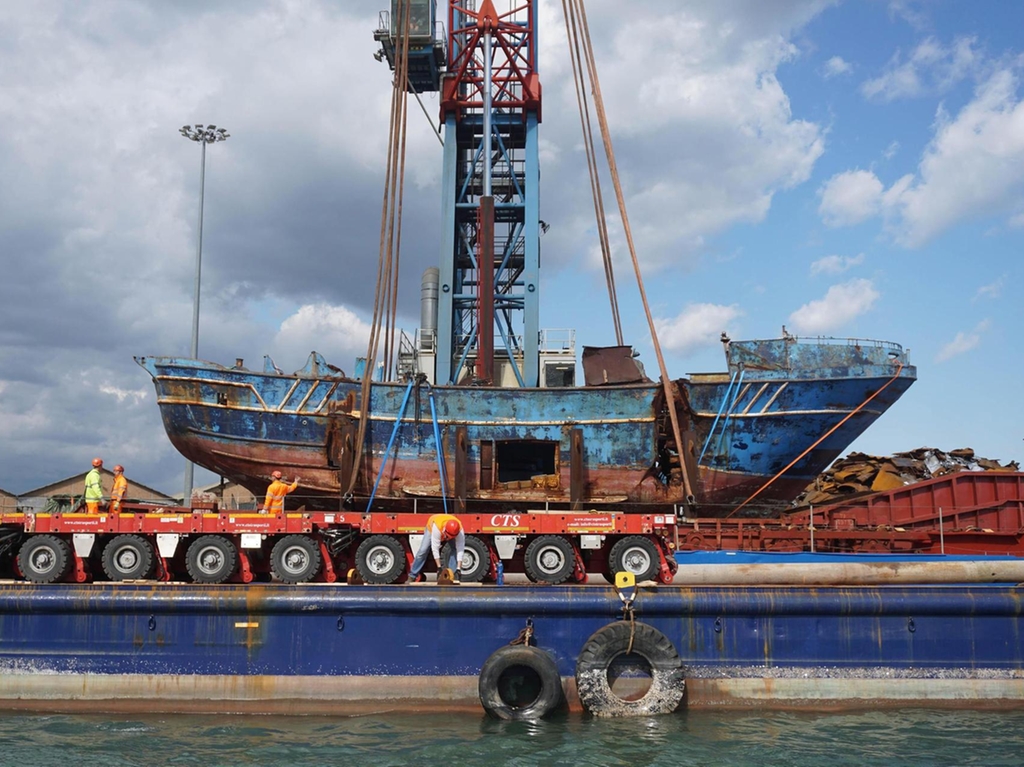
On April 18, 2015, the fishing boat left Tripoli, Libya, was carrying hundreds of migrants. The vessel crashed into a cargo ship coming to its rescue and sank in the Mediterranean Sea, killing over 800 people, according to a United Nations investigation. Only 27 people survived on a yacht that was originally designed for a crew of about 15.
More than a year after the tragedy, the Italian government brought the shipwreck to the surface and transported it to a NATO base in Augusta, Sicily. It spent there past three years, until a Swiss-Icelandic artist Christoph Büchel decided to exhibit it at the Biennale as an art installation. The boat has appeared in the Arsenale, a former dockyard now used as an exhibition space for the Biennale.
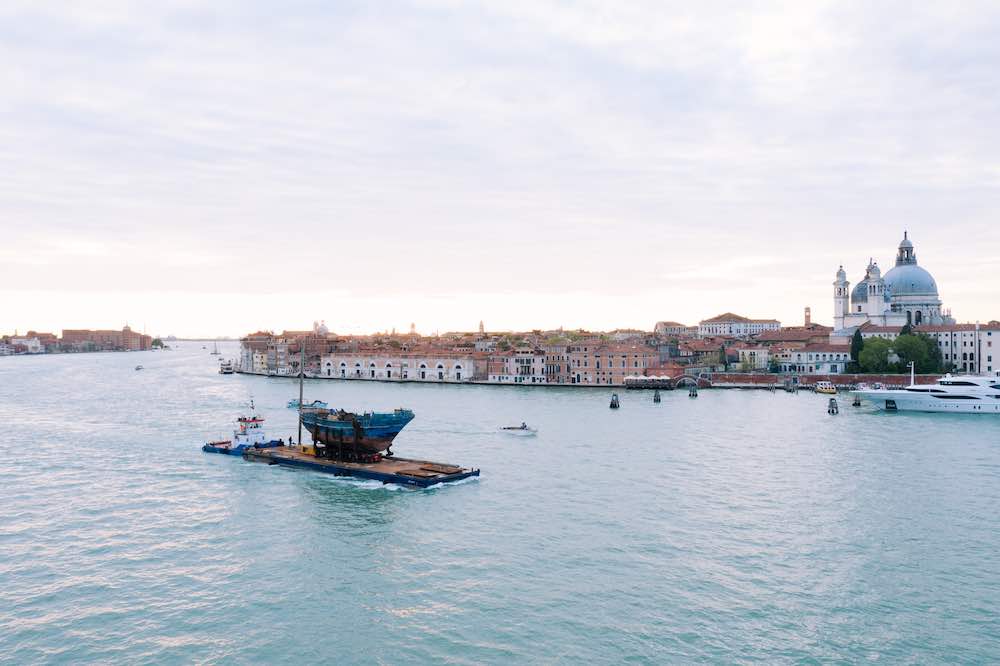
The vessel was measuring only 90 feet in length, in contrast to some of the largest fishing yachts in the world. According to the Deutsche Welle, the cost of salvaging the wreck in 2016, from a depth of 370 metres, made €9,500,000. That excluded the transportation and installation of the boat in Venice.
The name of the installation translates as Our Ship from Italian. The title refers to a policy launched by the Italian government in 2013, Operation Mare Nostrum (Our Sea), which is a Latin term for the Mediterranean. The policy aimed to combat the increasing number of migrant ships that were sinking in the Mediterranean Sea. It was scrapped a year later in favour of Operation Triton, in which ships that happened to be closest to sinking vessels would provide assistance. Gaping holes in the hull of the Libyan boat represent an evidence of its collision with a Portuguese freighter.
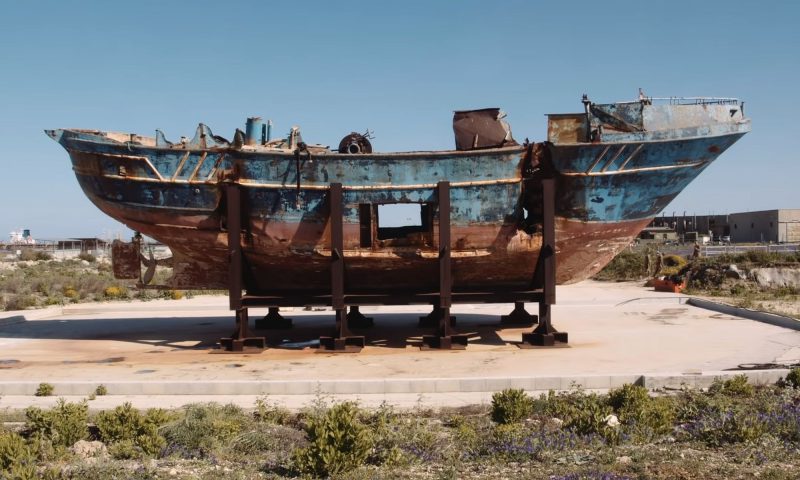
The release claims:
Barca Nostra is an inversion of a Trojan Horse in the ongoing battle of contemporary political strategies, wherein the vessel of those who were imprisoned inside it as human cargo becomes representative of the continuing migration crisis and the political and cultural shipwreck of which we are all part.
The vessel is being displayed in Venice to highlight the tragedy of migrant deaths in the Mediterranean. The intention is to use it as a ‘vehicle of significant socio-political, ethical, and historical importance’.
